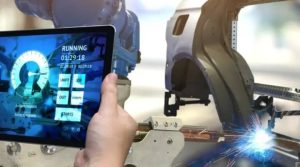What does a Robotics Engineer do?
Contents
Robotics Engineering is a field of engineering that involves the design, construction and operation of robots.
Robotics engineering is a field of engineering that involves the design, construction and operation of robots. Robotics engineers use their skills to create robots with the help of computer software. They also operate them to complete different types of tasks.
The demand for robotics engineers has increased over time due to advancements in technology and automation. This includes both commercial and military applications such as manufacturing, medical devices, unmanned vehicles (such as drones), search-and-rescue operations or space exploration missions
Robots can be used in many different situations and roles, including assisting with industrial tasks.
Robotics engineering is a field of engineering that deals with the design, construction, operation, and application of robots. It is related to electrical engineering, mechanical engineering and software engineering.
Robots can be used in many different situations and roles, including assistance with industrial tasks such as drilling machinery, spray painting machinery and assembly lines. Robotic arms are used in manufacturing environments; they have excellent precision and speed which means they can work where humans cannot reach easily.
Some types of robots are designed to move autonomously or semi-autonomously without making contact while others make contact (or nearly contact) with the environment or objects around them in order to manipulate them into performing a task – these robots are known as teleoperated because they must receive signals from outside their immediate area (i.e., by remote control).
Engineers are needed to build robots out of various materials, design them and make them work efficiently.
As you can see, robotics engineering is a complex and diverse field that requires a lot of knowledge. You must have a good understanding of mechanics, electronics, computer science and other related subjects to be able to build robots out of various materials.
To become successful in this field, you need good communication skills because you will be working closely with people from different departments (e.g., design team). You could also consider learning how to program if you are interested in programming robots or electronic devices for robotic applications.
Related Post:Master’s Degree Hood: Types and Costs
What does a Robotics Engineer do?
Design and build robots
Designing and building robots is a complex process that requires knowledge of many different fields.
The first step in designing a robot is to understand the problem that you’re trying to solve. If you are building a robot for personal use, such as cleaning up around the house or doing laundry, then your needs will be different than if you were designing a robot for industrial use.
Once you have decided on what tasks your robot will need to perform and identified how best to accomplish those tasks, it’s time for step two: coming up with ideas for how that might happen. In many cases this involves brainstorming with other engineers or people from other disciplines who may not have even thought about these problems before but could provide valuable insight into new solutions.
Give robots the ability to see, hear and understand their environment
- Robots need to be able to see, hear and understand their environment.
- Robots need to be able to move around in the world.
- Robotics engineers can also design robots that interact with the world around them, such as driving cars or working in factories.
Create software and algorithms to control robots
As a Robotics Engineer, you will create software and algorithms to control robots. These “brains” of the robot allow it to see, hear and understand its environment. They also allow for safe and efficient movements.
Evaluate systems to reduce errors and recommend improvements
As a Robotics Engineer, you’ll evaluate systems to reduce errors and recommend improvements. This involves testing and evaluating robots to make sure they’re safe, reliable, work correctly and are easy to use. It also includes maintaining them so they can be used over the long term.
This is an important part of your job because it helps ensure that robotics development continues at its current pace into the future. You’ll play an important role in making sure that robots continue improving our lives without causing any harm or damage along the way!
Work independently or as part of a team
As a robotics engineer, you’ll work closely with other engineers and technicians to develop the best robotic solutions for your customers. You should be able to communicate clearly and effectively to make sure that everyone on the team understands exactly what needs to be done.
As a robotics engineer in an engineering firm, you might have some customer contact as well. These customers could include individual businesses or large corporations who want new products designed for their needs. You may also have contact with vendors who supply parts for your projects, such as processors or sensors.
The amount of time you spend working independently versus collaborating with others will depend on your company’s culture and size; however, it’s important that all engineers know how to both collaborate effectively and take initiative when needed!
A Robotics Engineer is a person who designs, builds, and tests robots.
A Robotics Engineer is a person who designs, builds, and tests robots. They use both software and hardware to control them.
They use the following skills:
- Computer programming
- Mechanical engineering design
- Electrical engineering design
Common materials used in robotics engineering include aluminum, plastic and wood.
Common materials used in robotics engineering include aluminum, plastic and wood. Aluminum is often used to make robots that need to be lightweight. Plastic is often used for making flexible robots like arms or legs. Wood is also sometimes used for creating strong parts of a robot’s body like arms or legs.
Robots can be used to do things like work in factories on assembly lines or explore deep space or the ocean.
Robots can be used in many different situations and roles. They can be used in factories, space and the ocean. Robots have been used in many different ways to perform tasks that are dangerous or difficult for humans to do. They are able to do this because they have mechanisms that allow them to move around safely and easily manipulate objects with their hands. Also, robots don’t get tired like humans do when doing repetitive tasks over and over again which makes them very cost-effective for companies who want to save money on labor costs!
Electronics and Computer Science are two degrees that can prepare you for a career in robotics engineering.
Robotics engineering is a field that combines electronics and computer science. It deals with the design and operation of electronic devices, as well as computers.
In order to become a robotics engineer, you will need formal education in both areas. If you want to pursue this career path, it would be beneficial for you to study electronics engineering or computer science first. You can then work toward a degree in robotics engineering by taking classes like Introduction to Robotics and Advanced Robotics Systems Design.
Robotics engineering is an exciting career that can help you create solutions to modern problems.
What is Robotics Engineering?
Robotics engineering is a fast-growing field that can help you create solutions to modern problems. The field encompasses the design and manufacturing of robots, as well as their software programming and use in various industries. Some common applications of robotics include medicine, nuclear energy, space exploration, defense systems and more. A career in robotics engineering requires creativity, innovation, teamwork skills and problem-solving abilities.
Related Post:UTSA Online Degrees: Tuition and Requirements
Universities offering Robotics Engineering
Purdue University in IN
Purdue University is a public research university in West Lafayette, Indiana, United States. Purdue University is a land-grant university and operates one of the largest colleges of engineering in the United States. The university consists of eight campuses spread across Indiana and Illinois: Purdue University North Central, Fort Wayne, Hammond (formerly Calumet), Indianapolis, Merrillville (partial campus), New Albany, West Lafayette and Statewide Technology Services. The main campus is located on a large urban tract at the western edge of West Lafayette with additional facilities throughout Tippecanoe County in Martinsville, Indiana; Crawfordsville; Rensselaer and Monticello; Lafayette (for Purdue Pharma); Boonville; Warsaw; Fairmount; Nappanee; Alexandria
MIT
The [MIT] robotics engineering program has a reputation for its emphasis on human-robot interaction, mobility and manipulation, and autonomy. It’s no wonder that MIT was the first to offer a graduate degree in robotics engineering.
MIT offers different degrees in this field:
University of Waterloo, Canada
Location: Waterloo, Ontario, Canada
Size: 35,000+ students
Programs offered: Bachelor of Software Engineering (BSE), Master of Software Engineering (MSE), Ph.D., Co-op Program and research opportunities in Computer Science complement the above degree programs.
Students are required to complete a minimum of 3 years of academic work at the University before they can graduate with a BSE or MSE degree from this school. The courses offered at this university include: Introduction to Robotics; Robot Control Systems; Sensors for Mobile Robots; Autonomous Mobile Robots and Intelligent Agents for Mobile Robots; Algorithms for kinematics modeling, path planning & simulation etc., which help students get familiar with robotics engineering through hands-on experience on real-world projects such as autonomous vehicles, unmanned aerial vehicles (UAVs), autonomous underwater vehicles (AUVs) etc., Students will be able to learn more about self driving cars including autonomy in driverless vehicle systems such as collision avoidance algorithms using neural networks or vision based systems through projects like building an obstacle detection system using stereo cameras on top of car chassis instead off inside bumper mounted ones along side other sensors such as radar/lidar etc.; advanced topics related to autonomy in driverless vehicles including behavior prediction using machine learning techniques like deep reinforcement learning methods combined with low level sensor fusion algorithms like Kalman filters used together
University of Pennsylvania
Penn is a private Ivy League research university located in Philadelphia, Pennsylvania. Penn offers a Bachelor of Science in Robotics Engineering through the School of Engineering and Applied Science. The program is offered through the Department of Biomedical Engineering and includes courses covering topics such as biomechanics, computer vision and image processing, control systems engineering, machine learning, mechatronics systems design, mobile robotics control systems design, modeling human motion with sensors integrated into prosthetic limbs and exoskeletons for rehabilitation purposes.
The campus at Penn has a long history of being involved with advancements in engineering education as well as other fields related to technology such as physics or mathematics (for example see [1]). In fact it was founded by surveyor William Peters who came up with an idea for a school that would educate people on how to work with land so they could accurately survey it without relying on primitive tools like sticks that could easily break during their use since he knew firsthand how hard it was for someone who didn’t know what they were doing when trying to do something complicated like this which required precision measurement accuracy from both sides because if either side measured incorrectly then everything else would be off too.. This led him towards creating an institution where students could learn about surveying practices while also pursuing other areas related specifically towards land management such as geology or hydrology among others which are now commonly known today simply under one term “geography” but back then existed separately each having their own unique set
University of California, Berkeley
UC Berkeley has a number of robotics labs and research groups that offer students an opportunity to get hands-on experience with robotics. Undergraduates in the Engineering Sciences department can take courses in robotics engineering, while graduate students can enroll in a M.S. or Ph.D. program focusing on the subject matter. The Mechanical Engineering Department also offers courses on robotic systems and artificial intelligence, as well as internships at companies like Google and Toyota R&D that work with cutting-edge technology like self-driving cars (which are often considered to be robots).
Carnegie Mellon University
Carnegie Mellon University offers a Bachelor of Science in Robotics Engineering. CMU is ranked as one of the best universities in the country and is located in Pittsburgh, PA.
CMU also offers a robotics engineering minor and certificate programs for students who want to supplement their studies with additional robotics courses.
UW-Madison
University of Wisconsin-Madison
The University of Wisconsin-Madison is a public research university located in Madison, Wisconsin, United States. It was founded in 1848 and has a student body of about 41,000. It operates several satellite campuses throughout the state and its flagship campus on the shores of Lake Mendota near Downtown Madison is home to the oldest and largest ivy-league style quadrangle in North America. The university has been recognized as one of America’s Public Ivies by U.S News & World Report.[1] In 2010, it was ranked among top 10 best universities in both social sciences[2] and natural sciences.[3]
Related Post:University of Houston Online Degrees: Requirements and Tuition









